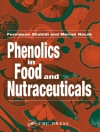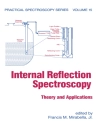The use of nanomaterials opened new perspectives also in analytical chemistry. Despite significant advances in instrumentation, sample preparation remained a bottleneck. The special features of nanomaterials such as ultra-small size and huge surface-to-volume ratio could recently be successfully implemented in sample preparation procedures. This monograph gives a comprehensive overview of these developments: From special properties of nanomaterials over physico-chemical background up to most recent and representative applications (e.g. membranes, lab-on-a-chip echnology, and SERS), all important aspects are covered. Additionl chapters on toxicity, legal and environmental aspects make this book an unique reference.
Innehållsförteckning
1 Nanomaterials (NMs) in Analytical Sciences
1.1 Introduction
1.2 Types of NMs
1.3 Applications of NMs
1.4 Conclusions
References
2 Special Properties of Nanomaterials (NMs) for Sample Preparation
2.1 Introduction
2.2 Mechanical Properties of NMs
2.3 Thermal Properties of NMs
2.4 Electrical Properties of NMs
2.5 Optical Properties of NMs
2.6 Magnetic Properties of NMs
2.7 Adsorption Properties of NMs
2.8 Conclusions
References
3 Adsorption Mechanism on Nanomaterials (NMs)
3. 1Introduction
3.2 Adsorption Process
3.3 Conclusions and Future Perspective
References
4 Carbon Nanomaterials (CNMs) as Adsorbents for Sample Preparation
4.1 Introduction
4.2 Carbon Nanomaterials (CNMs)
4.3 Adsorption on CNMs
4.4 Applications of CNMs
4.5 Conclusions
References
5 Membrane Applications of Nanomaterials (NMs)
5.1 Introduction935.2Traditional Membranes
5.2 Traditional Membranes
5.3 Carbon Nanomaterial-based Membranes
5.4 Nanoparticle-based Membranes
5.5 Molecularly Imprinted Polymer (MIP)-based Membranes
5.6 Conclusions
References
6 Surface-Enhanced Raman Spectroscopy (SERS) with Nanomaterials (NMs)
6.1 Introduction
6.2 Theory of SERS
6.3 SERS Mechanisms
6.4 Determination of SERS Enhancement Factor
6.5 Selection Rules
6.6 Fabrications of SERS Substrates
6.7 Applications of SERS
6.8 Conclusions
References
7 Nanomaterials (NMs) for Biological Sample Preparations
7.1 Introduction
7.2 The Use of NMs in Diagnostic Platforms
7.3 NMs-based Lab-on-a-chip (LOC) Platforms
7.4 Biomedical Applications of NMs
7.5 Sensor Applications of NMs
7.6 Conclusions
8 Magnetic Nanomaterials for Sample Preparation
8.1 Introduction
8.2 Synthesis of Magnetic Nanoparticles
8.3 Solid-Phase Extraction (SPE)
8.4 Magnetic Solid-Phase Extraction (MSPE)
8.5 Conclusions and Future Trends
References
9 Lab on Chip with Nanomaterials (NMs)
9.1 Introduction
9.2 Lab-on-a-Chip (LOC) Concept
9.3 NM-Based LOC Platforms
9.4 Conclusions and Future Perspectives
References
10 Toxicity and Risk Assessment of Nanomaterials
10.1 Introduction
10.2 Hazard Assessment of Nanomaterials
10.3 Toxicity Mechanism of Nanomaterials
10.4 The Traditional Risk Assessment Paradigm
10.5 Strategies for Improving Specific Risk Assessment
10.6 Conclusions
References
11 Economic Aspects of Nanomaterials (NMs) for Sample Preparation
11.1 Introduction
11.2 Toxicity Concerns of NMs
11.3 Global Market for NM-Based Products
11.4 Conclusions
References
12 Legal Aspects of Nanomaterials (NMs) for Sample Preparation
12.1 Introduction
12.2 Safety Issues of NMs
12.3 Regulatory Aspects of NMs
12.4 Conclusions
References
13 Monitoring of Nanomaterials (NMs) in the Environment
13.1 Introduction
13.2 Toxicity and Safety Concerns of NMs
13.3 Main Sources and Transport Routes of Nanopollutants
13.4 Requirements of Analytical Approaches
13.5 Sampling of NMs in Environmental Samples
13.6 Separation of NMs in Environmental Samples
13.7 Detection Techniques for the Characterization of NMs
13.8 Conclusions
References
14 Future Prospect of Sampling
14.1 Introduction
14.2 Sampling
14.3 Sample Preparation
14.4 Green Chemistry
14.5 Miniaturization of Analytical Systems
14.6 Conclusions
References
Om författaren
Chaudhery Mustansar Hussain, Ph D is an Adjunct Professor and Director of Labs in the Department of Chemistry & Environmental Sciences at the New Jersey Institute of Technology (NJIT), Newark, New Jersey, USA. His research is focused on nanotechnology, analytical chemistry, advanced technologies & materials, environmental management, and various industries. Dr. Hussain is the author of numerous papers in peer-reviewed journals as well as prolific author and editor of several (around 50 books) scientific monographs and handbooks in his research areas.












